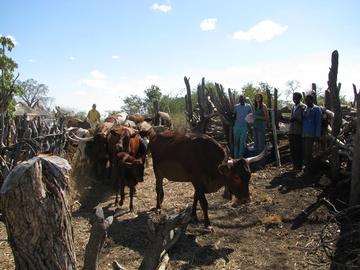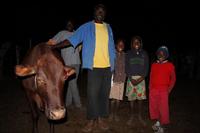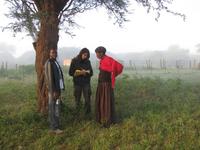Eve Miguel
Last update: 3 October 2017
More about my research on:
Research Gate
My Professional Blog
Summary
New approaches have to be developed in order to understand the dynamic and evolution of pathogens in a changing world that is highly impacted by human influences and perturbation. A new framework combining ecology, epidemiology and socio-economy has to be adopted to understand such complex systems.
The title of my Phd which I will complete in December 2012 is "Contact in the wild: Pathogens transmissions from wild to domestic ungulates in Africa". In this PhD I focus on buffalo - cattle interactions at the periphery of national parks in Zimbabwe. More specifically, I use statistical modeling of natural serological incidence to describe, with an evolutionary and ecological perspective, the influence of contact rates (with GPS data), vaccination and resource selection on the dynamics of foot and mouth disease (article for submission in Ecological Applications).
In one chapter of my Ph.D, I use Social Network Analysis to know how cattle breeding strategies determines the pattern of contacts among cattle herds at the edge of the protected areas and influence the circulation of the virus within the domestic compartment. These works try to find keys to develop models for zoonosis with wild or domestic reservoirs like tuberculosis or brucellosis.
In another chapter, I use a site occupancy model with tick detections on vegetation to determine if there are differences in abundance and species richness in national parks, interfaces and communal lands. This work tries to develop models on vector presence probability in a heterogeneous landscape with the best trade-off in terms of time and money between data quality and field experimentation.
Finally, in collaboration with Oxford University and the Wildlife Conservation Research Unit, I am studying the role of top predators (Panthera leo) on the buffalo-cattle interact and consequently the dynamics of a pathogen of their prey species. This study might contribute to the understanding of biodiversity and trophic chains on (re)emergences of diseases.
Last update: 3 October 2017



